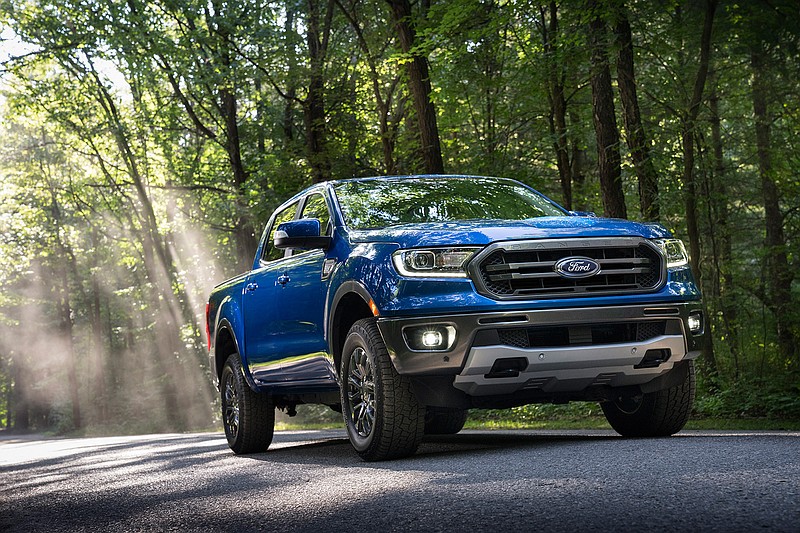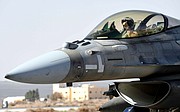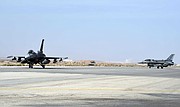Wait. What?
During the same time period that so many supposedly knowledgeable auto writers - mea culpa - voted the Jeep's midsize pickup the North American Truck of the Year, Ford's entry, the Ranger, outsold it 2:1 to climb into second place in what has suddenly emerged as a high-tech, muscular, high-value segment.
That buyers often ignore and seldom request the accrued wisdom of veteran auto journalists is nothing new. I get that from my own friends and family all the time. Case in point, nearly every reputable rater puts the Honda Ridgeline at the top of this class, and hardly anybody buys one. On the other hand, the Toyota Tacoma rates near the back of the pack in comfort and driveability, but is the runaway sales leader in both new and used midsize models.
Clearly, brand loyalty matters far more than anything I might add to the conversation, whether it's to advocate modern frame design that makes vehicles lighter, drive better and safer, or drivelines that deliver more power and better fuel economy, or the immense and proven life-saving benefits of driver-assist hardware and software.
Glassy eyes greet one's carefully documented discussion of such matters. That is followed by everyone in the room returning attention to electronic devices.
"I've been a (brand) (man or woman) for 20 years," is a powerful purchasing motivator that manufacturers rely upon, or even abuse. Many manufacturers hold back new technologies, figuring - correctly, it appears - that buyers will stick with their brand. This allows them to build in higher profit margins by either omitting things to reduce costs or forcing buyers to climb model trees and buy optional equipment packages to pump up prices. Usually, it's a combination of the two.
Why Rangers are selling
No brand has more loyalty than Ford trucks and, thus, I was apprehensive of what I might find when a 2020 Ford Ranger, at last, appeared in my driveway. Ford brought back its midsize utility last fall after an eight-year hiatus. It sold well from day one.
Was this because of brand loyalty, or because Ford built a great truck? I'm sure it's some of the former, but in all honesty, the Ranger is an altogether competent little truck.
It all starts with the frame, and Ford engineers crafted a high-strength steel one that allows for a truck that is both nimble and capable. The Ranger's 43-foot turning circle is three feet shorter than the Ridgeline's, for example, while its 1,460-lb payload dwarf's Tacoma's 1,000 lbs. but is a bit below Gladiator's 1,600 lbs.
Equipped with a $495 trailer tow package, the Ranger's 7,500-lb. towing capacity dwarfs Tacoma's 6,400 lbs. General Motors' Colorado and Canyon can pull 7,000 lbs. Most Gladiators will haul 4,000 to 4,500 lbs., although a diesel-powered one (we're talking serious money here) combined with 4:10 rear-end tow package can pull 7,650.
Boy toy
Yours truly was among the near-unanimous pack that chose the Gladiator the Texas Auto Writers Truck of the Year last fall. We gushed about the nice ride afforded by a RAM, multilink rear suspension, making it the most livable Jeep ever built. We loved the Jeep DNA from stem to stern in both styling and equipment.
What could be better?
Had Ford chosen to enter the Ranger in the competition we would have known. Bottom line, the Ranger is quicker, more agile, more sophisticated electronically, and just drives better. This is a truck one can live with seven days a week, on- or off-road.
This notion struck me as I pushed the Ranger through the notorious Wamba run. Even at triple-digit speeds, the truck has minimal body roll and feels well planted at the corners. It has that supple give one usually associates with an F-150 Raptor screaming across the desert. One would not even dream of pushing a Gladiator like this.
The real beauty of this truck is the 2.3-L, I-4 engine that Ford has used in multiple applications since the 2015 Mustang. A Focus RS version cranked out 350 hp, but Ford tuned the Ranger to put out 270 hp.
Significantly, stroke is longer than bore, so it's a torque champion, and that's where pickups do their work. The Ranger's 310 lb.-ft of torque is available early, at 3,000 rpm, so the truck takes off like a greyhound after a rabbit.
Mated to a 10-speed automatic, the engine swifts smoothly and imperceptibly. At speed using a control button mounted on the center shifter, fourth, fifth and sixth gears do the work when it's time to keep the revs up. The upper gears are more like torque converters that deliver fuel economy and towing capacity.
Zero-to-60 comes in 7.4 seconds, just 0.1 seconds slower than the V-6 powered Ridgeline, and 0.8 seconds faster than the V-6 Tacoma. Ranger's EPA-estimated fuel economy of 21 city/26 highway beats Ridgeline's 19/26, Colorado's 20/26, Tacoma's 20/23 and Gladiator's 16/23.
And it's a hoot to drive.
Though it lacks Jeep's legendary off-road prowess, Ranger comes with a couple of off-road packages that will handle anything most of us throw at it. We danced up and down a few muddy hills just to make sure. (Grin).
Sophisticated
The Ranger's cabin styling feels a little outdated and hard plastics abound, but still, it all works. Seats are comfortable, gauges easy to read, knobs and buttons intuitive to use. Standard are a USB port, Bluetooth, four speakers, and a Wi-Fi hot spot. Available are dual-zone automatic climate control and the SYNC 3 infotainment system with an 8-inch touch screen, navigation, multiple upgraded sound systems, satellite radio, two USB ports, Apple CarPlay, and Android Auto.
Connecting the phone to Bluetooth took seconds.
Safety second
Standard driver-assists include a rearview camera, forward collision warning, and automatic emergency braking. Still, Ford insists on demanding extra gold for state-of-art active safety features like front and rear parking sensors, cruise control, adaptive cruise control, lane departure warning, lane-keep assist, blind-spot monitoring, and rear cross-traffic alert with trailer coverage.
For the record, adaptive cruise control can keep you out of deadly nose-and-tail collisions out on the interstate, while lane-keep helps avoid lane wandering, rollovers and head-ons. Those features should not be optional and, indeed, come standard on Tacoma.
Bottom line
Ford has built a solid platform with the new Ranger. It's quick, competent and fun. As more packages and engines are introduced in the coming years - Ranger Raptor anyone? - it could well become an iconic pickup.



